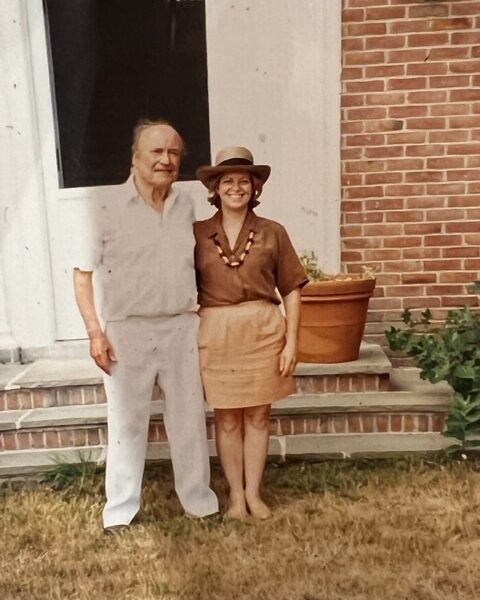

By Ellen E. Myers
Change is moving through the world at a dramatic pace. Colliding cultures, technology advances, war, upheaval over the nation’s core principles — it all makes a story about the Gardiner family of Gardiners Island more relevant now than when I began to write it in 1993.
My home was on bumpy, unpaved road then. I was the only year-round resident there. I’d rented a film, “A Clockwork Orange,” to study for a particular role in an acting class. It was winter, near midnight.
Just as British thugs were pounding on a door of a woman, begging their way in, claiming that their car had broken down — someone knocked at my front door.
A booming voice with a British accent called out: “My car is in a snow ditch. I’m Robert Gardiner. I flew here from Florida for the annual bird count on my island. I’m meeting people from The Nature Conservancy there. Tomorrow.”
I knew Larry Penny, then head of The Nature Conservancy. Quickly finding his number, I called him, apologizing for the hour, saying it was an emergency.
“If I were to hand my cordless phone to a gentleman saying he’s Robert Gardiner, standing outside my front door, could you tell me if it is Mr. Gardiner?” He said, “Yes.”
Well, it was Mr. Robert David Lion Gardiner, 16th Lord of the Manor of Gardiners Island — and I let him in.
All maps of our area include Gardiners Island. It has belonged to this family since the early 17th century, long before the United States was formed. That family was engaged with the East End since then, sustaining themselves through centuries of transformation and growth.
The island is the oldest deeded land grant held by any family to whom it was originally awarded in all of North America at the time of Mr. Gardiner’s death at the closing of the 20th century.
I opened the door for Mr. Gardiner that night. We passed hours together until a rescue team arrived to pull out his car. During the waiting, I found Mr. Gardiner extravagant with stories. I made a fire and offered him cognac to help ward off the chill he had.
A few weeks later, I received a call from Joseph R. Attonito, a lawyer for Mr. Gardiner, who, he explained, had found me “a good Samaritan.” I was invited to join him for a trip to Gardiners Island when the weather was suitable during the summer.
Summer arrived, and I received again the invitation, with a named date.
While elderly when we met, Mr. Gardiner was energetic. The island was pristine. “That’s why serious conservancy groups do the bird count here and nowhere else on Long Island,” he said. “We’ve kept the island free of any destruction.” I mentioned that most Native American tribes would have loved and kept the East End in such order had it been possible.
Mr. Gardiner, driving me all around the island, when reaching a stream, stopped, got out and down on his knees, and drank with his hands from it. “It’s fresh and clean and pure,” he said. Later, we had lunch at the Manor House.
He invited me to his estate home in East Hampton on other days, where he talked about the various artifacts, furniture and portraits within the house after he learned I had a degree in art history.
My imagination was lit. His stories, his willingness to spend time with me, caused me to begin research about his family. He spoke of having no heirs, and was troubled by that.
I’d been writing articles under a pen name for both Dan’s Papers in the Hamptons, as well as the Sunday Long Island section of The New York Times. I also was working on a script with someone. Images and ideas were forming in my mind for months.
Gardiner talked about ancestors, historic moments, family strategies, to pride in the herb garden and the rhododendrons around back.
An agreement was drawn up by his lawyer, Sag Harbor lawyer Patricia Weiss, who assisted me in securing the permission and acquisition of story rights in various mediums. The contract had no deadline.
I was invited to the Gardiners’ home in Palm Beach. There, he tended to speak more of society. He loved jewels. At one point, he asked me if I had ever worn a diamond tiara. “No,” I answered. He disappeared, then reappeared with a diamond tiara, put it on my head, walked me over to a mirror and said, “You can’t say that again.”
It was there that I discovered we had both been to the SYDA Yoga Ashram and shared a love of their coffee. Neither of us discussed a thing about our spiritual views, just the coffee.
He took me to Sagtikos Manor in West Bay Shore, listed in the National Register of Historic Places. He spoke about the “White House,” from which Julia Gardiner married President John Tyler in 1842. The large white Gardiner home in East Hampton became known as “the summer White House.”
“Julia,” he said, “moved from one White House to another.”
While he knew most Americans didn’t understand why anyone would want to stay in a house for generations, his education had been different.
I developed a book concept, but I was unable to establish a publisher’s agreement for the fee wanted by local resident and internationally renowned Richard Avedon to do the photographic work.
Much later, I began working with some assistants to create a limited television series. Robert Gardiner had died by then. His homes changed hands. Other writers referred to his family in print as “American royalty.”
During COVID, I reflected on my love of film over television. The themes are powerful within this history, past and present. I, with focused purpose, began again to work on what I loved: a feature film story.
This historic window into this East Hampton family will serve a hunger for magic through endurance, hope, independence, raw truths about people, survival, adventure and inspiration.
Ellen E. Myers is a resident of Water Mill.
 More Posts from Viewpoint
More Posts from Viewpoint